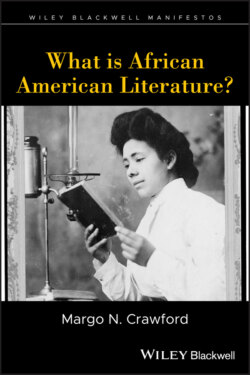What is African American Literature?

Реклама. ООО «ЛитРес», ИНН: 7719571260.
Оглавление
Margo N. Crawford. What is African American Literature?
Table of Contents
List of Illustrations
Guide
Pages
What is African American Literature?
Acknowledgments
Introduction: The Affective Atmosphere of African American Literature
The Idea of the Black Book
How Do You Bind Nerve Endings?
Notes
1 The Textual Production of Black Affect : The Blush of Toni Morrison’s Last Novel
Toni Morrison’s Blush
Notes
2 Mood Books
Hughes’ Signifying on Signifying
Bodily Feeling in In Our Terribleness and Ask Your Mama
Rethinking Literary Tradition Through Mood
Notes
3 The Vibrations of African American Literature
Feeling of Vibration (Not Imitation)
The Vibrations of Cane
To Choose and Lose Signature: Entering into the Not Yet Here
Endnotes
4 Shiver: The Diasporic Shock of Elsewhere
Beyond the Impulse to Anthologize: the Shiver of What is Left Out
The Diasporic Shivers of Keorapetse Kgositsile
Notes
5 Twitch or Wink: TheLiterary Afterlife of the Afterlife of Slavery
The Twitch and Winks in Post‐Neo‐Slave Narratives
Winking at the Psychic Hold of Slavery in Black Arts Movement‐Era Drama
Baraka’s Reinvention of Slavery in Slave Shipand The Slave
Ntozake Shange’s Performance of Body/Air Tensions
Atmos‐Feeling in Funnyhouse of a Negro
Notes
CODA
Notes
Index
WILEY END USER LICENSE AGREEMENT
Отрывок из книги
Wiley Blackwell Manifestos
.....
The blank white pages become the pause when words do not only disappear; the narrative of whiteness also disappears as we feel whiteness as a color. The tint of this whiteness is so bright it overwhelms. Rankine creates the tension between whiteness as a racial identity and whiteness as a color that does not need to feel like an oppressive force, a dominant cultural force that erases the possibility of the black book. Citizen might be the textual production of a color line performance that makes the idea of a radical white book become the idea of a radical black book. Rankine’s inclusion of Glenn Ligon’s text paintings allows the texture of the radical black book to be felt in the midst of the shiny white pages. Ligon’s text paintings give words texture and make readers/viewers experience surface as depth. The depth of the surface of the shiny white pages, like the depth of the black pages with Ligon’s text paintings, is the surface depth that does not need the imagined interiority of a book. Citizen then becomes a textual production of a book that has no inner space, no post‐paratext structure that we could call a narrative on race and class in America in the twenty‐first century. Citizen’s fragmented form is a constant gesture to this narrative “on race and class in America in the twenty‐first century.” But Rankine never allows the gestures to settle into a master narrative.
Why would African American writers, creating the new territory of twenty‐first century African American literature, want to write books that are multi‐edged, surface oriented, with no imagined interiority? Could it be that there is a desire to imagine community in formation as opposed to community as already formed? Could the depth of surface be the depth of the surface that the process of “in formation” becomes? Before any settling, the surface is where the tensions of potential community tingle. In Citizen, when the black words “Come on. Let it go. Move on” appear on the shiny white page, we may feel the tension between remaining stuck to a surface or feeling that there is a way to move on even as we remain stuck to that surface. Re‐reading these words, in Citizen, through the lens of this focus on the texture of the white pages, allows us to see how Citizen is the textual performance of a twenty‐first century unmarking of the black book.
.....